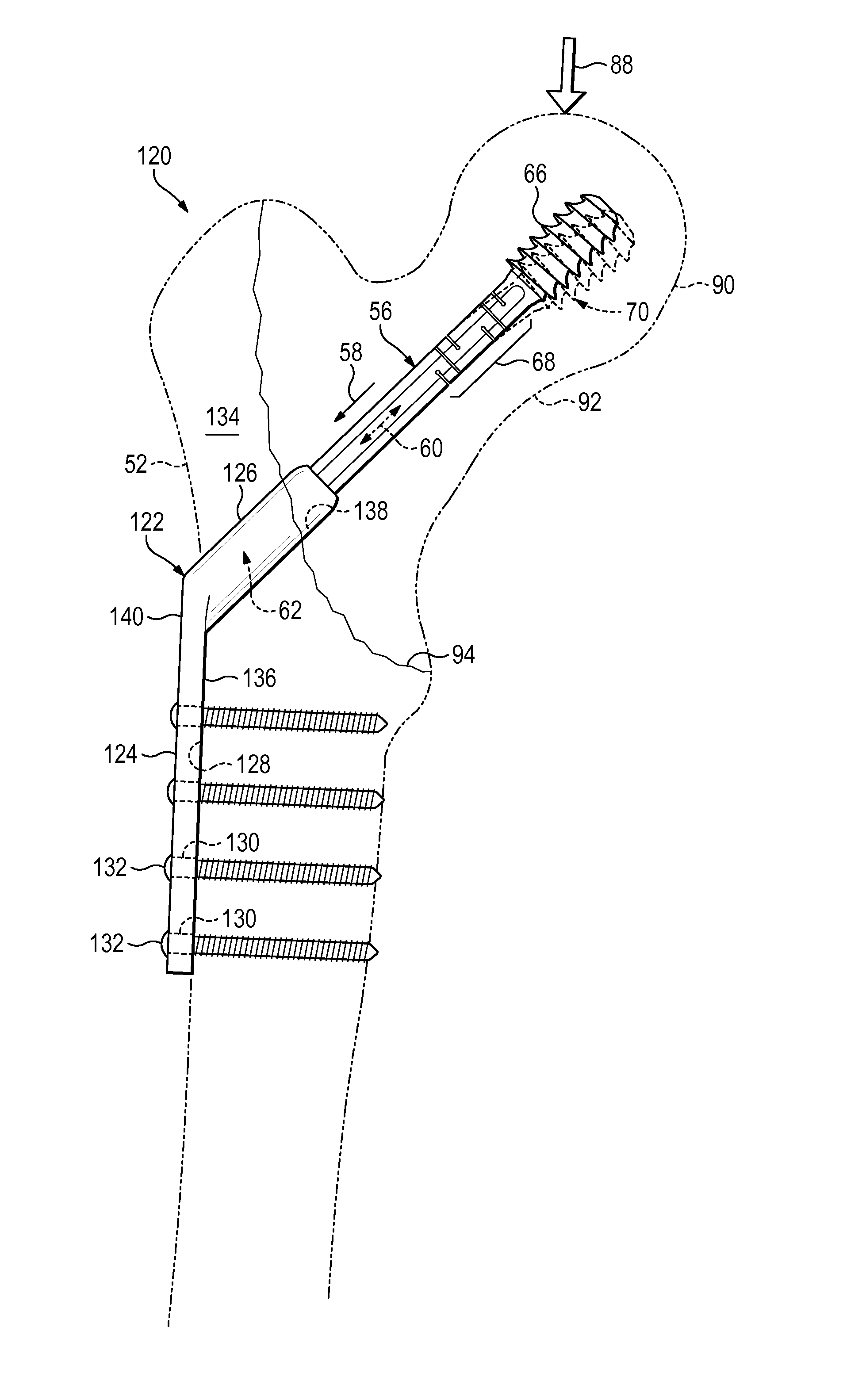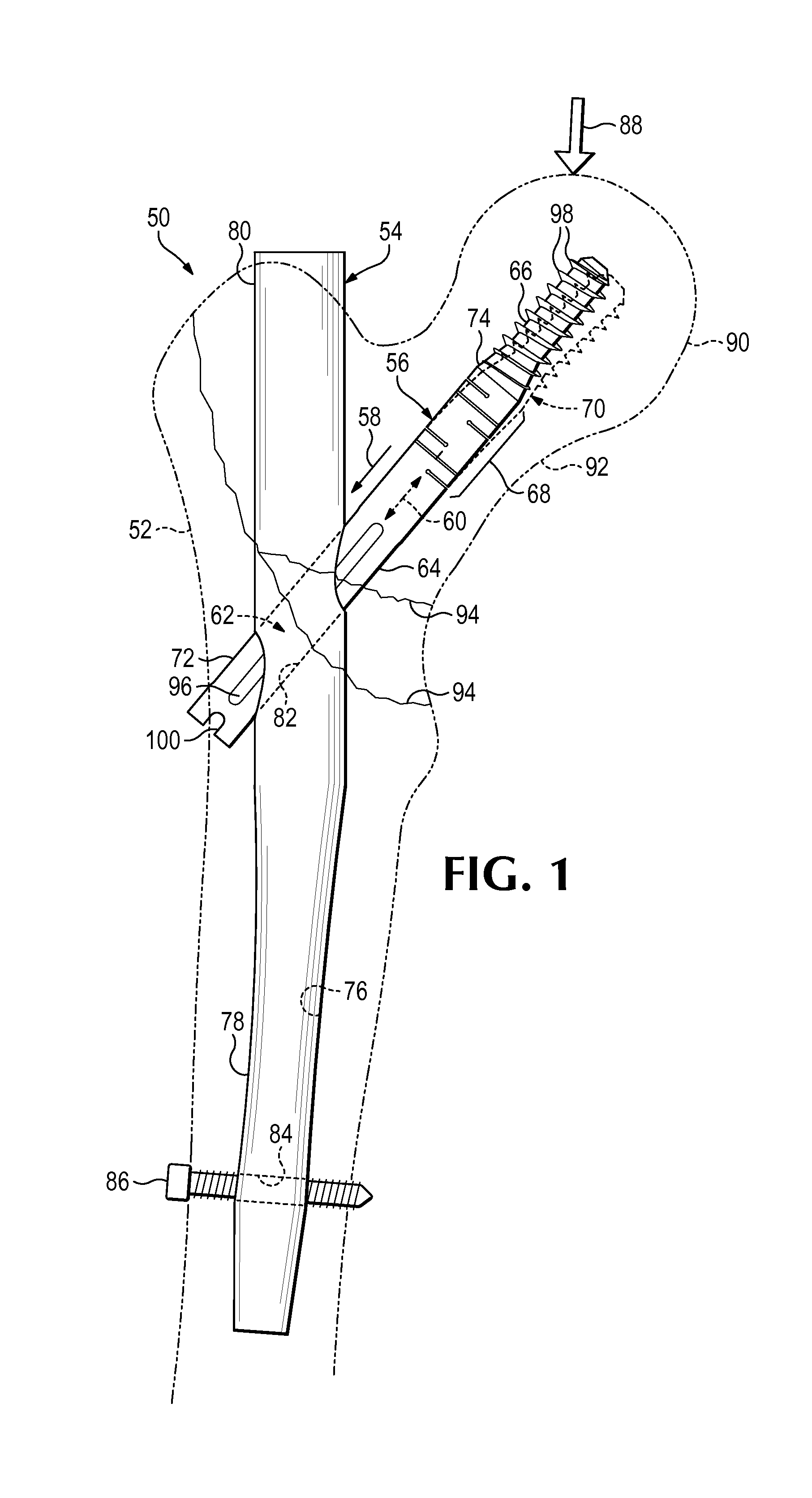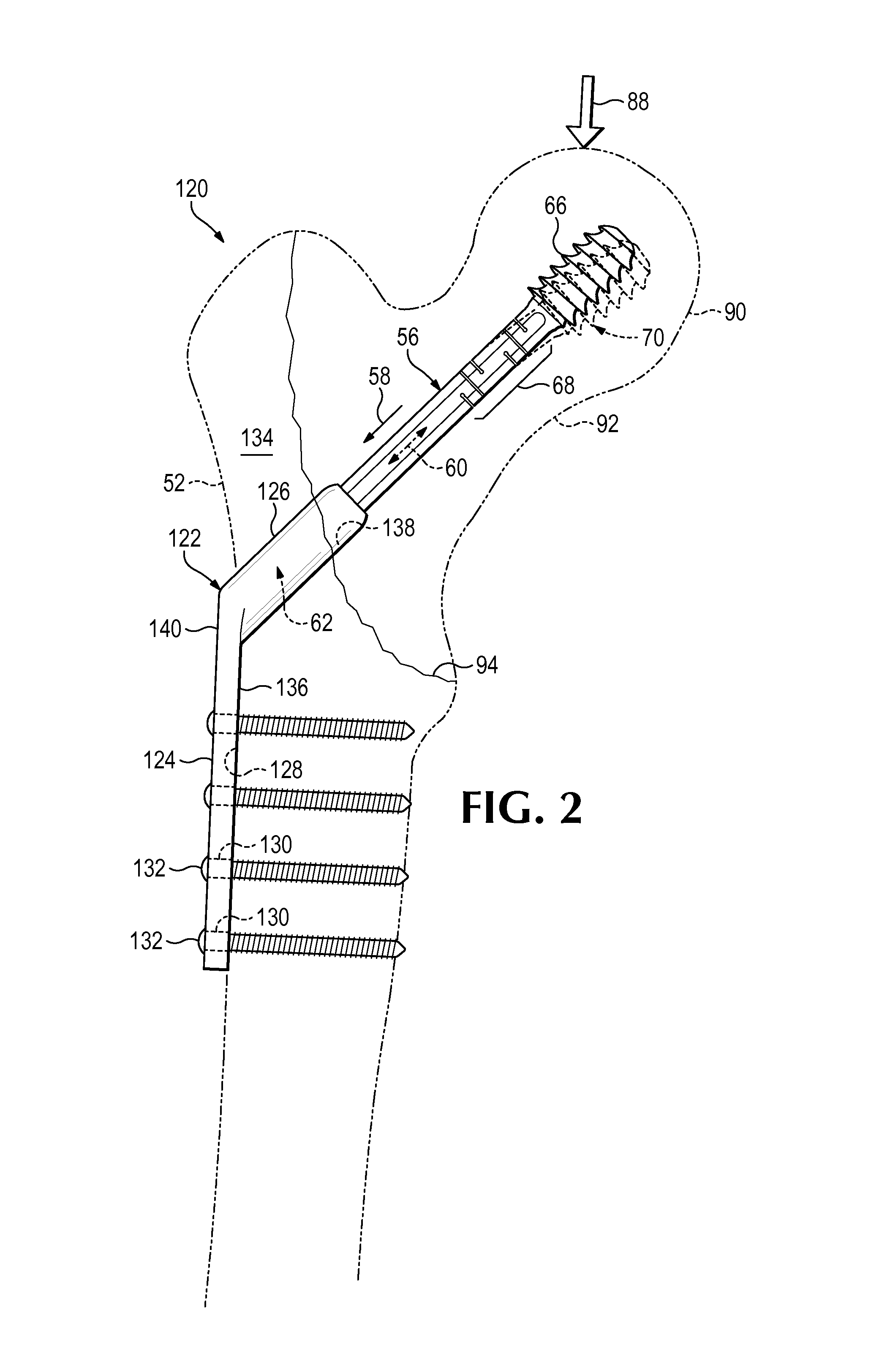Hip fixation system with a compliant fixation element
- Summary
- Abstract
- Description
- Claims
- Application Information
AI Technical Summary
Benefits of technology
Problems solved by technology
Method used
Image
Examples
example 1
Fixation Elements with Flexible Shafts
[0098]This example describes exemplary fixation elements for the hip fixation systems of Section I, with each fixation element having a shaft with a compliant region forming only a longitudinal portion of the shaft; see FIGS. 9-11.
[0099]FIG. 9 shows a fixation element 56 defining an opening in the form of a sinuous helical slit 180 that forms a compliant region 68. The slit may provide communication between an axial bore and the exterior of the fixation element. Slit 180 may create interlocking features composed of tabs 182 located in complementary recesses 184, which permit flexion of the element's shaft and torque transmission through the shaft.
[0100]FIG. 10 shows another exemplary fixation element 56 for the systems of Section I. The element has a neck or waist 190 that forms a compliant region 68 of the fixation element. Neck may represent narrowing of shaft 64 that is axisymmetric, bilateral, or unilateral. In some embodiments one or more i...
example 2
Fixation Elements with a Flexible Bone-Securing Portion
[0102]This example describes exemplary fixation elements for the hip fixation systems of Section I, with each fixation element having a flexible bone-securing portion formed at a leading end region of the element; see FIGS. 12-20.
[0103]FIGS. 12-14 show a fixation element 56 with a bone-securing portion 66 having a compliant region 68 produced by a flexible blade 220. The blade extends from shaft 64 and may (or may not) be wider than the shaft to form a paddle-shaped element. The blade has a body 222 and a row of teeth 224 projecting from a center line of the body, with the row arranged parallel to the long axis of the fixation element. The size of gaps 226 between the teeth may determine how far the blade can be flexed downward (or upward); contact between the teeth, produced by flexing the blade, may establish a limit of downward flexion. Blade 220 may be configured to deform substantially in one plane of a set of three mutuall...
example 3
Fixation Elements with Internal Compliant Region
[0106]This example describes fixation elements 56 for the hip fixation systems of Section I, with each fixation element including a bone-securing portion 66 having an internal compliant region; see FIGS. 21-23.
[0107]FIG. 21 shows an exemplary three-part fixation element 56 having a shaft 64 and a compliant bone-securing portion 66. The bone-securing portion has a bone-engaging region 260 surrounded by a core 262, and separated from the core by a reversibly deformable compliant member 264 that forms compliant region 68 of the fixation element. Shaft 64 may or may not be formed integrally with core 262. Compliant member 264 may surround core 262 and may be structured as a layer (e.g., a tubular layer) disposed between core 262 and bone-engaging region 260. The bone-engaging region may have any suitable structure for anchoring the fixation element in bone, such as an external thread 266, barbs, a blade, teeth, etc. Bone-engaging region 26...
PUM
 Login to View More
Login to View More Abstract
Description
Claims
Application Information
 Login to View More
Login to View More - R&D
- Intellectual Property
- Life Sciences
- Materials
- Tech Scout
- Unparalleled Data Quality
- Higher Quality Content
- 60% Fewer Hallucinations
Browse by: Latest US Patents, China's latest patents, Technical Efficacy Thesaurus, Application Domain, Technology Topic, Popular Technical Reports.
© 2025 PatSnap. All rights reserved.Legal|Privacy policy|Modern Slavery Act Transparency Statement|Sitemap|About US| Contact US: help@patsnap.com



